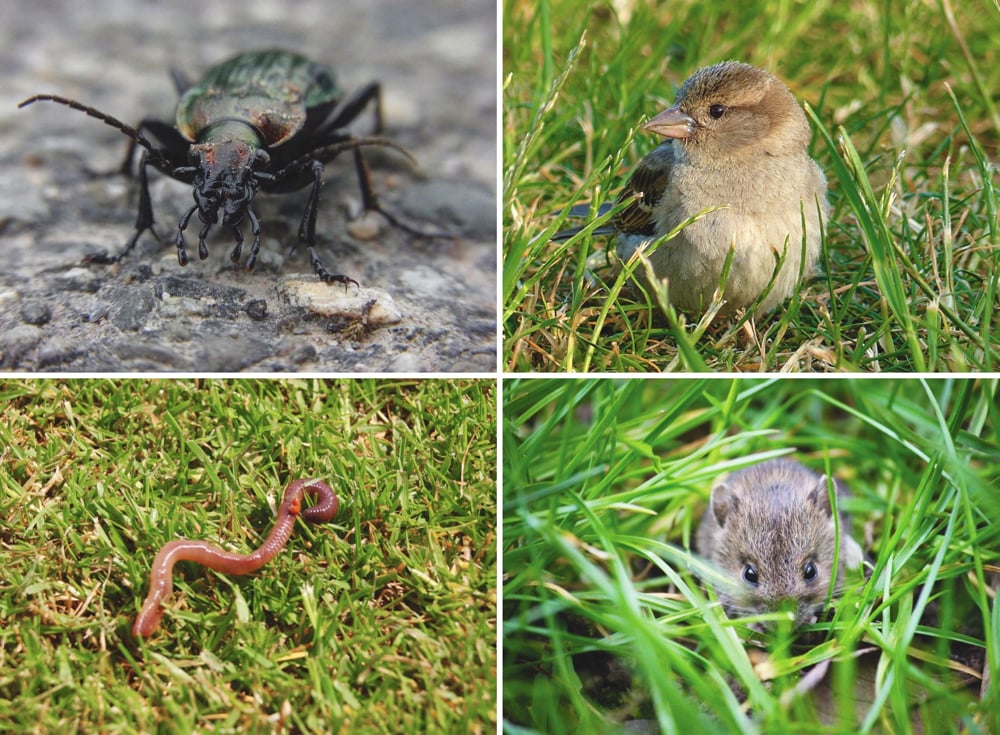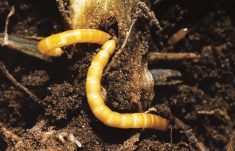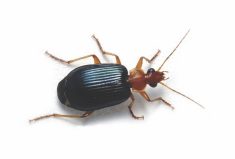The dominance of zero- or minimum-tillage practices on the Prairies means lots of weed seeds are left on the soil after harvest, but it turns out that there’s help available to stop them from germinating next spring, and you don’t have to buy it at your local chemical dealer.
“Lowering the deposits into the weed seed bank is a good thing for growers,” says Chris Willenborg, an associate professor in the department of plant sciences with the University of Saskatchewan, and co-author of a study on managing the weed seed bank through insect predation. “Not only will this reduce weed competition in the spring, it can also help curtail the risk for increasing herbicide resistance.”
Read Also

Producers aren’t panicking over tariffs and trade threats
The influence of tariff and trade uncertainity on farm business decisions.
The weed seed bank is the reserve of viable seed left on or in the ground. Those seeds will either germinate, end up too deep in the soil and die, decay or be consumed by a predator.
“Seed predation is one of nature’s ways of dealing with resistant weeds,” Willenborg says. “Herbicides won’t get it all, mechanical seed destructors won’t remove all resistant weed threats, so anything you can do to help predators is a positive outcome for long-term weed management on your farm.”
Willenborg says there are three main methods of reducing inputs to the seed bank. Chaff collection has been a traditional and fairly reliable tool. Recently, some growers have been using the effective but costly Harrington Seed Destructor, which crushes the seeds as they come off the combine. While both work, seed from some weeds can be shed onto the soil before harvest, or be too small for the Destructor to manage. Some seed still reaches the soil surface, which is where predators come in.
Beetles love canola
“Predators generally require three things — food, water and shelter in the form of an overwinter habitat,” Willenborg says. “All of this exists or can exist in prairie cropping systems. By encouraging predators, the impact on the weed bank can be substantial. In fact, seed predators such as carabid beetles and crickets are among the most unrecognized yet important beneficial insects in our cropping systems. Different crops harbour different species, but when growers establish a habitat for insects to consume their weed seeds, they are essentially getting free weed control.”
Together with scientists from the University of Alberta, Willenborg and former PhD student Sharavari Kulkarni looked at the numbers of seeds that carabid beetles consume in a canola field, and whether they have a weed preference. They found the beetles preferred volunteer canola to wild mustard and stinkweed, and will dig as deep as two centimetres to consume them.
“Beetles are an excellent seed predator,” Willenborg says. “There are over 900 species of carabid beetles in Canada, and they are the greatest source of weed seed predation. For the purpose of this study, we only looked at naturally occurring beetles — no insects were added. We found the beetles were most active on areas of the crop where there was some shade, and they preferred a crop canopy.”
Willenborg says more research is needed into which predators choose which seed and why. That will help determine how they can further reduce weed seed numbers.
Give them cover
“In Canada, we have a large knowledge gap in terms of knowing which predator preys on which species,” says Charles Geddes, a research scientist with Agriculture and Agri-Food Canada in Lethbridge. “Most of the current research in this country is on carabid beetles, but there are many other predators from other insects, earthworms, slugs, mice and birds.”
There have been more studies on weed predation in Europe and the U.S., where the crops studied and growing conditions are often quite different from those on the Canadian Prairies. But that research suggests there are ways growers here can create favourable conditions for predation. For example, U.S. research has shown that zero tillage helps keep the weed seeds on the surface, making them more readily accessible for insects.
“In addition, insects like a cover, and seem to be more active when there is a closed canopy,” Geddes says. “While many of the methods used in other countries like continuous cropping, relay cropping or double cropping are not as common in Canada, growers here can use cover cropping, or winter annual crops like winter wheat to create living canopy closure. Seeding perennials can also help create a better insect habitat.”
If growers are using tillage, Geddes says studies suggest that delaying it after harvest can help make the stubble available as long as possible for the insects to feed on the weed seed.
“If we are trying to increase the amount of predation, we will have to look at our cropping practices to increase habitat for these insects,” Willenborg adds. “Tighter row spacing creates a more closed canopy, which beetles prefer, but goes against current trends. Wide row spacing also puts more pressure on your herbicide, and this increases the selection for herbicide-resistant weeds. Because of these two impacts, wider row spacing is a double whammy for increased weed problems. In addition, if we want to create a longer foraging period at the end of the season, cover crops or overlapping crops could have an impact.”
Geddes says that at this point we don’t know all the benefits from insect predation in this country, as it may depend on the crop.
“There needs to be more research in Canada to determine all of the benefits farmers of the crops grown on the Prairies can achieve from encouraging predation. But when you are seeing numbers like 50-90 per cent reduction of annual seed bank inputs, this is something we shouldn’t ignore.”















